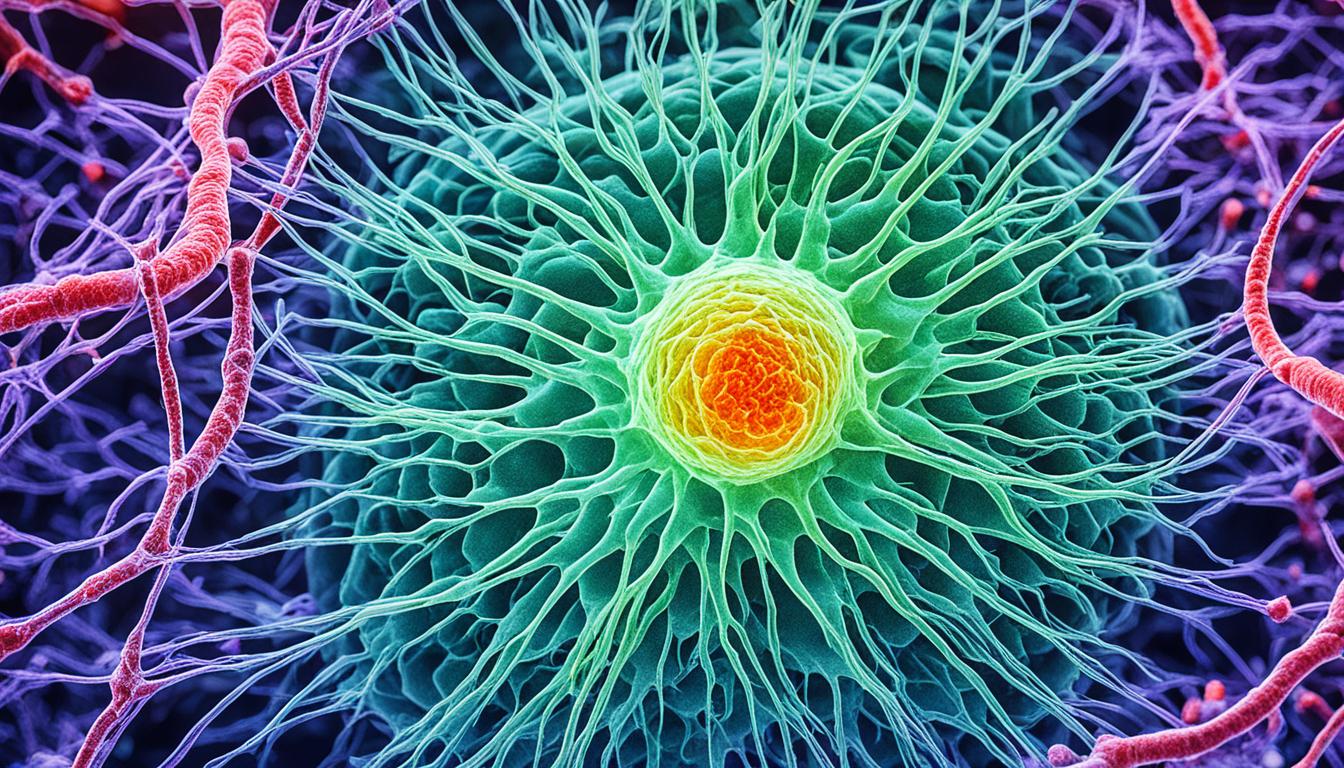Juvenile idiopathic arthritis (JIA) is a common chronic disease in kids. It causes joint pain, stiffness, swelling, lasting at least 6 weeks. This condition changes a child’s life significantly, known as childhood arthritis or juvenile rheumatoid arthritis.
To diagnose JIA, a doctor looks at your medical history and does a physical exam. They test your blood for inflammation markers and autoantibodies. They might also do X-rays or MRIs to look for joint damage and check for other diseases.
Treating JIA aims to ease inflammation, pain, and stiffness. It also tries to stop joint and organ damage and make your body work better. Treatments include drugs, biologics, and steroids. Physical therapy is important to help you move your joints better.
Stem cell therapy is a new and hopeful treatment for JIA. It uses stem cells to fix tissues and change how your immune system works. This treatment is good for kids with severe JIA who don’t get better with regular treatments.
Key Takeaways:
- Juvenile idiopathic arthritis (JIA) causes joint pain, stiffness, and swelling in kids, being the most common of its kind.
- Diagnosis includes looking at medical history, doing a physical exam, and running blood tests and imaging studies.
- Treatment focuses on controlling inflammation, lessening symptoms, protecting joints, and increasing quality of function. It uses medicines and physical therapy.
- Stem cell therapy is being researched as a possible treatment for severe JIA cases that don’t respond to usual care.
- It’s crucial for children with JIA to keep getting medical care to manage the disease and improve their life quality.
Who does Juvenile Idiopathic Arthritis Affect?
Juvenile idiopathic arthritis (JIA) mainly hits children and is more common in girls. It affects up to four in every 1,000 Australian kids from six months to 16 years old.
Kids with JIA feel joint pain, stiffness, and see their joints swell for over 6 weeks. While we don’t know the exact cause, both genes and the environment seem to play a role. Scientists are still figuring out which risk factors matter most in getting JIA.
A big study on JIA’s causes, called ANZ-CLARITY, is trying to help. They want to find out how to diagnose, treat, and prevent JIA better. They’ve made a special biobank for JIA samples in Victoria. Studying these will show us more about JIA’s genetic side.
Doctors have found a connection between JIA and heart disease risks. That’s why it’s so important to find and treat JIA early. Doing this can lower the chances of health problems later on.
Epidemiology of Juvenile Idiopathic Arthritis
JIA is the most common long-term joint disease in kids worldwide. But, its spread and how often it happens are different everywhere. This shows the mix of genes and surroundings that brings on JIA.
| Region | Prevalence | Incidence |
|---|---|---|
| North America | 5-150 cases per 100,000 children | 2-22 new cases per 100,000 children per year |
| Europe | 10-200 cases per 100,000 children | 1-20 new cases per 100,000 children per year |
| Asia | 10-100 cases per 100,000 children | 1-15 new cases per 100,000 children per year |
Note: The numbers here are rough estimates. They can change based on the study and how it was done.
Genetic and Environmental Factors
Genes are part of why some kids get JIA. Scientists are still trying to see which genes are key. They’ve found that changes in certain genes, like those in the HLA area, make it easier to get JIA.
Things in the environment, from infections to stress, might start JIA in kids with the right genes. But we need more research to point out what these environmental triggers exactly are.
The better we understand JIA’s mix of genes and environment, the more we can do to help. It could lead to better ways to diagnose JIA, treat it, and stop it from starting in the first place.
The Impact of Research on Juvenile Idiopathic Arthritis
Research on JIA helps us understand the disease better. It has also improved how we care for patients. The JIA biobank, created by the ANZ-CLARITY study, is key to this. It lets researchers find genetic factors linked to JIA and other autoimmune diseases.
These discoveries bring hope for better care and new treatments. Knowing the genes behind JIA allows scientists to look into drug repurposing and personalized treatments. This way, we might change how we treat and help young JIA patients.
Research also pointed out how having a sibling with JIA might increase your risk. It found that certain genes and vitamin D levels could also matter. This info helps in preventing JIA and spotting it early.
The big aim of JIA research is to find the primary cause of the disease. We want to limit its lasting effects and, most importantly, find a cure. Teamwork among experts, along with using high-tech tools like machine learning and biomarker analysis, is pushing us forward. These steps give children with JIA hope for a better tomorrow.

